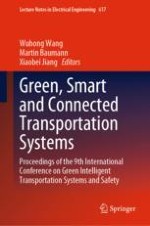2020 | OriginalPaper | Chapter
Risk Evaluation Model of Unsignalized Intersection Based on Traffic Conflict Line Theory
Authors : Li Yuan, Yi-hang Sun, Xuan Zhang, Juan He
Published in: Green, Smart and Connected Transportation Systems
Publisher: Springer Singapore
Activate our intelligent search to find suitable subject content or patents.
Select sections of text to find matching patents with Artificial Intelligence. powered by
Select sections of text to find additional relevant content using AI-assisted search. powered by
